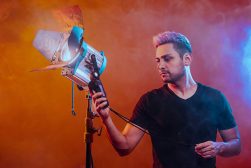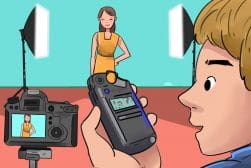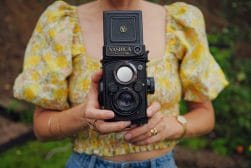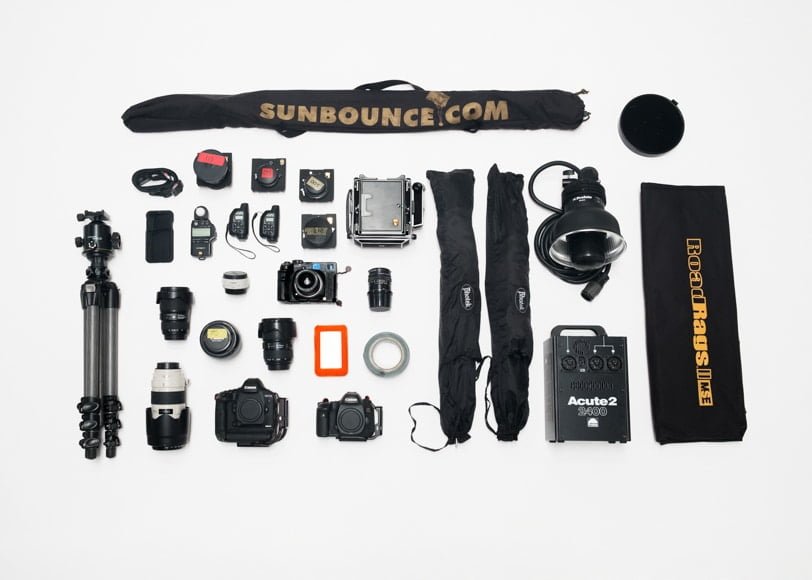
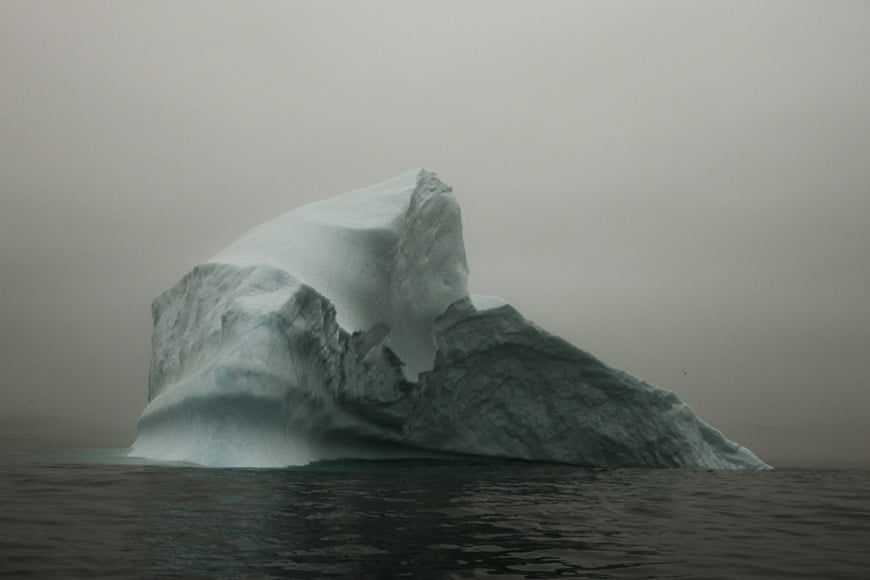

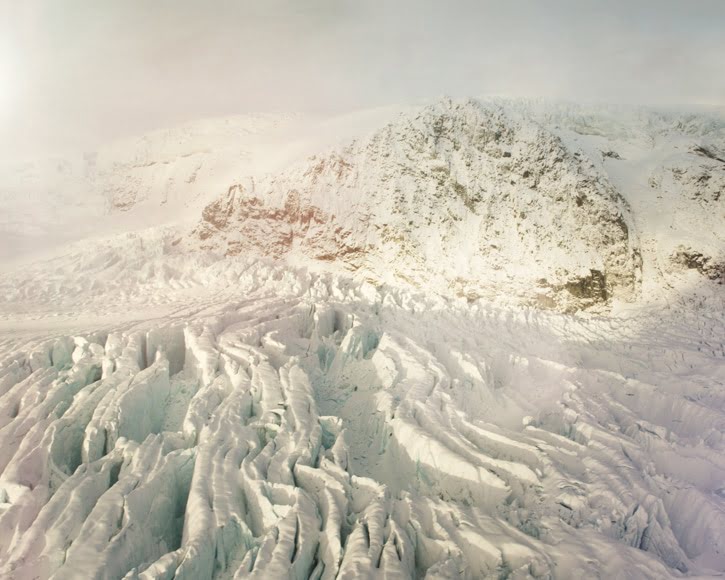

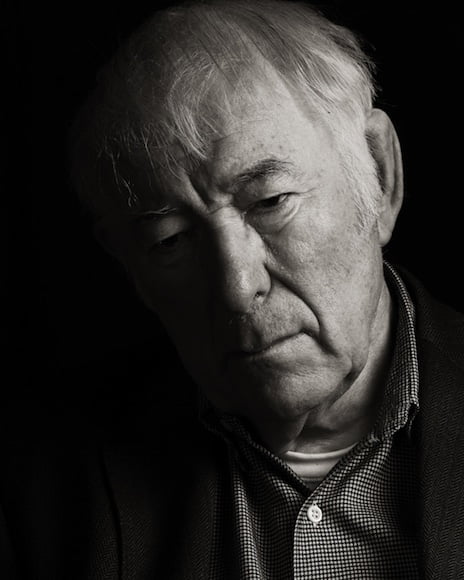

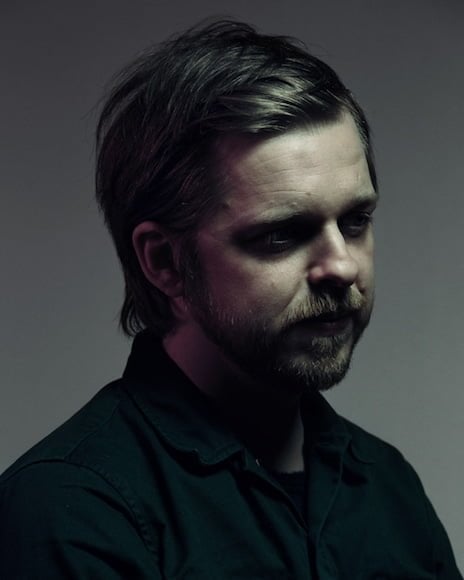

My passion for photography started very early in life. At the age of 13 I got my first proper camera and that was it for me I’ve never wanted or tried to do anything else.
Since then I’ve developed a career as a commercial and fine art photographer and have worked all over the globe and have lived in London, Sydney and New York.
My work is included in private and public collections and most notably the QLD Art Gallery and The Powerhouse Museum. In the last ten years I’ve had over 10 solo shows and been part of more than 20 group shows.
In 2009 my first monograph was published titled Melt, Portrait of an Iceberg. It was awarded a PDN and D&AD and the accompanying exhibition has been shown around the world.
My primary concentration is portrait and landscape photography. Two very different disciplines but I love them both for the contrast they bring to my life and my work.
I’m as happy working in the confines of a studio for my portrait work as I am when I’m in the wilderness shooting landscapes. I truly believe that each discipline feeds the other and I’m certain I couldn’t do one without the other.
Commercial work for me is integral to what I do as a fine art photographer. It not only provides funds for me to be able to finance personal work but working collaboratively with other creative people enhances my ability to problem solve and look at new ways of tackling subjects whether they be a person or a mountain.
In 2008 I was the co-founder of the POOL Collective, an artist collective based in Sydney consisting of visual artists who work across commercial and fine art projects from stills to video and multimedia. It’s the first of its kind in Australia.
In 2009 we set up the POOL grant which is an initiative set up by the collective that provides $10,000 and a year’s mentorship to an emerging artist working in photography and/or film to realize, complete and exhibit a body of work. Each year the work from the previous recipient’s work is shown during the Head On Festival in Sydney.
My go-to gear is mostly Canon. I’ve been a Canon shooter for as long as I can remember and when I got into digital it was a no brainer for me to go with the Canon digital system.
Canon EOS 1DX Mark II – This is my main camera for commercial work and it’s fantastic in low light.
Canon EOS 5Dsr – This is more used as a backup camera but the additional pixel size comes in handy sometimes and I tend to use this one as my carry around camera. For the simple reason it’s a lot less bulky than the 1DX
.
Canon 24mm-70mm f/2.8 – Probably the lens I use most, I love the quality of this zoom. I used to own all of the prime lenses, but I like to keep my kit to a minimum when possible and found myself just using this all the time.
Canon 85mm f/1.2 – I love this lens for portrait work and I love the speed it gives me in low-light situations.
Canon 70mm-200mm f/2.8 – This lens is also fantastic for portraits. I tend to use this when I want to create a shallow depth of field and lift my subject off the background.
Canon 16mm-35mm f/4 – I only use this lens occasionally but I do like it very much. It has virtually no distortion on the edges.
Canon 1.4x converter – I bought this specifically for a job to extend the length of the 70-200 but I keep it in the camera bag as it comes in handy sometimes.
Film
I’ve recently started shooting film again so have been dusting down some of my old film cameras. My two favorites are my Mamiya 7 and my Linhof
, but I also have a couple of RZ 67
’s.
Mamiya 7
Mamiya 65mm f/4
Mamiya 80mm f/4
The Mamiya kit is lightweight and versatile, it’s a rangefinder and really this just comes down to the fact it’s a basic, simple camera and I love the feel of it.
Linhof Master Technica 5×4
Rodenstock 115mm f/6.8
Sinar Sinoron 135mm f/5.6
Sironar-N 210mm f/5.6
Rodenstock Apo-Ronar 300mm f/9
I really like shooting portraits with the Linhof. The way people interact with a large format camera is very different.
Often the subject has to sit incredibly still just by the size and nature of the camera. It is quite intimidating to have one’s portrait taken with it and it really slows down the process of making a portrait which gives me a completely different approach than shooting with smaller formats.
Having said that, I mostly use this for shooting landscapes. Again, I love how it slows down the process and makes one consider what’s in front of them.
To me, shooting film is like enjoying a fine bottle of wine whereas shooting digital is like doing shots.
Grip and Lighting
Camera strap – Peak Design – one of the best straps I’ve come across over the years. Sturdy, comfortable, secure and easily detached from the body in a matter of seconds if you so require.
Manfrotto Carbon Fiber 055CXPRO4
Induro BHD3
I have a bunch of tripods and mono pods, but this tends to be my go-to.
Pocket Wizard Plus III – Great for either triggering flash packs or camera.
Minolta VF light meter – Yes, I still meter. I know a lot of people don’t these days but even in the digital age I love my light meter (see tips).
Profoto Acute 2 2400 Packs – I have quite a few of these, and they are trusty workhorses – incredibly reliable, and that is key for me. Although slower than most modern packs between recycle times I prefer to use these as they force me to slow down.
When I changed from shooting large format and medium format film to digital, I found myself shooting very quickly and I often felt like I was missing something by shooting that way. I find being forced to slow down makes me consider the shot more, especially when shooting portraits.
That said, when shooting digital I’m always on quite a low power so recycle times are barely noticeable.
Profoto Acute Heads – Again, I have a ton of these but when shooting portraits, it would be very rare for me to use more than three heads. I use a lot of different modifiers, but I do like the standard reflector with grids attached.
Photek Umbrellas – Probably my most frequently used modifier at the moment. I love this as a light source, and it can be manipulated in so many different ways.
You can use them as a bounced source with and without the sock diffuser, you can collapse the umbrella to give you more of a direct source and you can use them as a shoot through.
Other modifiers (not shown) that I use a lot – Elinchrom Octa modified for Profoto
and Molar Beauty dish.
Road Rags – I have about three kits of these and they are so useful for cutting and shaping the light, especially when on location.
Sunbounce – My preferred is the silver and white option, but 9 times out of 10 I use the white just as a soft fill where needed. I also have the solid black that I use a lot for negative fill.
Essentials I couldn’t do without …
I use a few iPhone apps that I find are invaluable:
Viewfinder Mark II – Awesome app for lining up the shot and working out the lensing of a shot before getting the camera out of the bag especially for large format photography.
Reciprocity Timer – Essential for long exposure film photography.
Light Meter – As far as a phone light meter goes this one is surprisingly accurate.
Sun Surveyor and Sun Seeker – Both great apps for working out where the sun will be at your desired shoot time.
Sun Surveyor has the ability to show you locations from street view. Perfect if you are planning days ahead before you get a chance to reccie.
LACIE 2T rugged hard drives – Lots of these, I tend to back up the back up to another back up.
Gaffer tape – Couldn’t live without this stuff.

Check out these 8 essential tools to help you succeed as a professional photographer.
Includes limited-time discounts.





